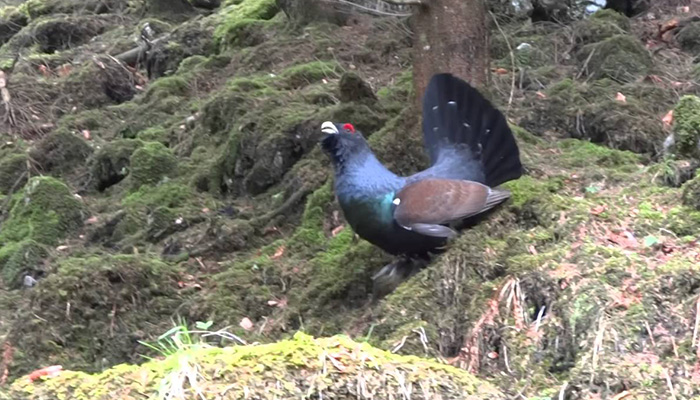
English: Western Capercaillie, Eurasian Capercaillie
Russian: Обыкновенный глухарь
German: Auerhuhn
French: Grand Tetras
Mongolian: Эгэл сойр, Ердийн сойр
Japanese: ヨーロッパオオライチョウ (Yoroppa-o-raicho)
Body length: ♂ 74-90 cm, ♀
54-63 cm
Sedentary
in mature coniferous, preferring areas with old pines on rocky ground with
abundance of berry-bearing shrubs and moss and with element of aspen and
spruces, avoiding open ground. Spectacular communal display in late spring.
Identification:
Very large, ♂ being
about a third larger than ♀.
Takes off with very loud wing noise; longer flights fast and direct, with
bursts of rapid wingbeats interspersed between glides.
- ♂: Not likely to be confused
with any other grouse through mere size; that aside, has very long tail (cocked
and spread as a fan during display), long neck (erect in display, with raised
feathers) and dark colours. Heavy, strongly curved bill straw-yellow. A
conspicuous rounded, white patch at base of forewing. In flight characteristic,
with long, folded, straight tail and long, thick, outstretched neck making
wings look comparatively small.
- ♀: Considerably smaller than
♂, still distinctly
larger than ♀ Black
Grouse. In spite of size difference can be confused with Black Grouse, which it
resembles, the two being brown, barred dark, and found in similar habitat, but
told by: throat and parts of upper breast unmarked orange-brown; more obvious
strings of white patches on scapulars (‘braces’); often slightly paler and more
rufous plumage; slightly longer and more rounded tail, which is somewhat more
rufous (though rufous tinge to some degree often found on ♀ Black Grouse, too).